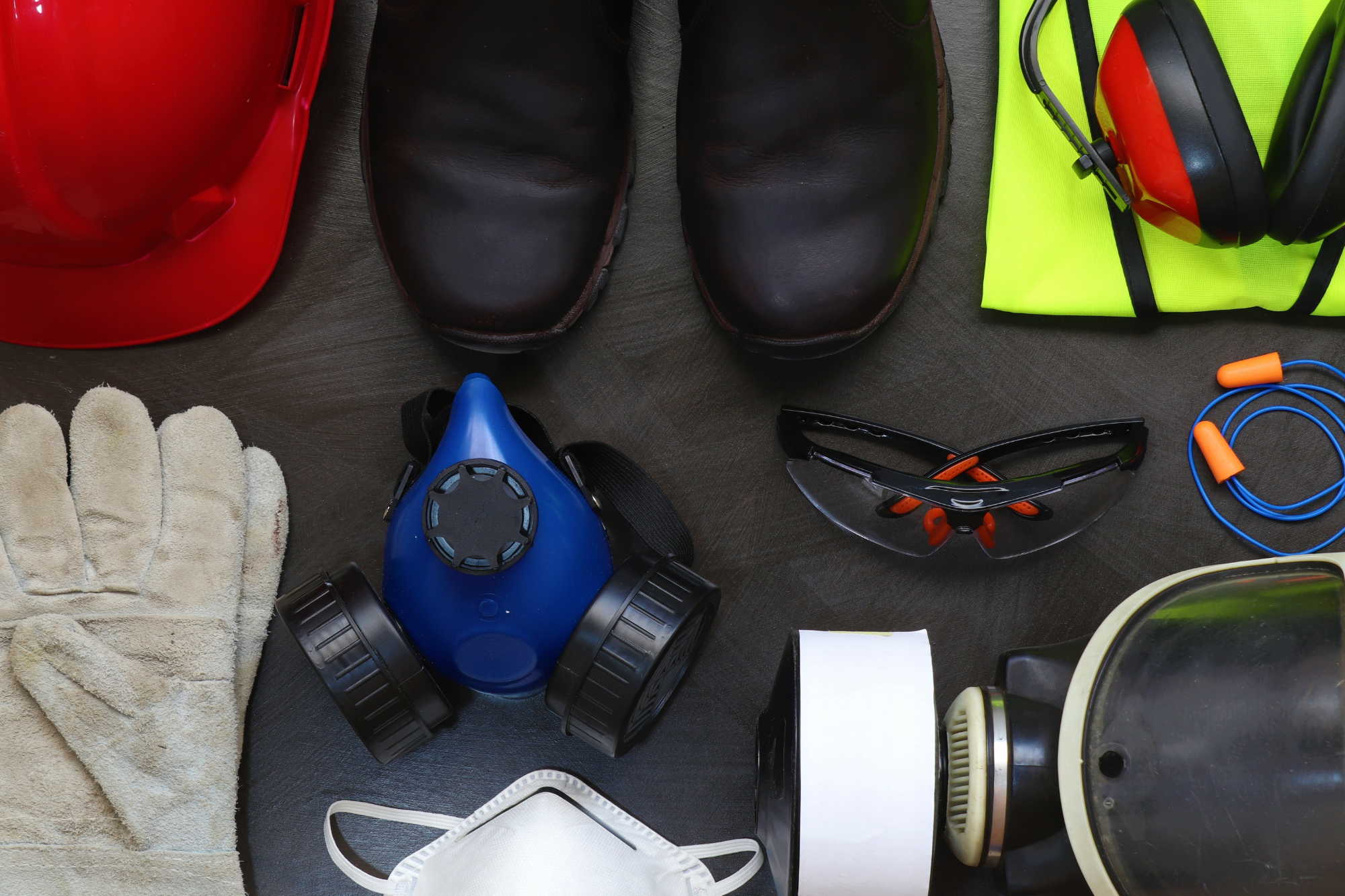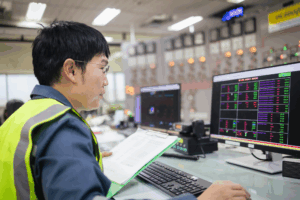
PPE for manufacturing: Protecting employees from head to toe
Manufacturing environments contain a variety of hazards, many of which can’t be fully controlled by engineering or administrative controls. Often referred to as the “last line of defense,” personal protective equipment (PPE) can play an essential role in preventing injury or illness from occupational hazards.
Hearing protection
Noise-induced hearing loss is a serious occupational hazard and typically requires hearing protection to be controlled. If employees are exposed to noise over 85 decibels for an 8-hour period, then you’ll need to provide them with adequate hearing protection.
There are three main types of hearing protection: earplugs, canal caps, and earmuffs.
- Earplugs offer great protection from noise and are lightweight and unobtrusive. You can get earplugs that are reusable or disposable, and some can also be custom fit for employees who use them often.
- Canal caps can be useful for employees who are exposed to loud noise for short periods of time or someone who must walk through a high-noise area to get from one department to another. They usually don’t have the same protection as the plugs because they don’t enter the ear canal; they merely cap the canal’s entrance.
- Earmuffs are generally used as a supplemental protection from noise. They might be used in addition to earplugs to help reduce noise exposure even further. It’s important to note that if earmuffs don’t fit perfectly or seal adequately, they can increase noise exposure because noise may echo inside the “muff.” Muffs must fully enclose the ears and seal against the head.
Eye and face protection
It’s important to anticipate and protect employees from hazards that can cause damage to their face or eyes.
Eye hazards include flying particles such as dust from grinding, metal chips from machine shop equipment, or wood chips from woodworking. Even when small, these particles can cause significant damage to the eyes.
Other hazards to look out for include hazardous chemicals such as aerosol cans, cleaning solutions, solvents for cleaning metal, spray adhesive, and spray paints. Depending on the chemical, contact with the face or eyes could cause a range of issues from irritation to chemical burns or even blindness. Finally, if lasers are used in your operations, it’s critical to assess potential exposure, as light radiation from lasers can severely damage the eyes.
To protect employees from these potential hazards, you’ll need to select the correct PPE. When selecting eye and face protection, you have several options available.
Eye and face protection options
- Safety glasses with side protection are designed to protect against flying objects such as metal or wood chips.
- Goggles protect the eyes against flying objects and from floating dust, hazardous liquids, gases, and vapors.
- Face shields are needed to protect against chemical splashes, hot slag, flying debris, and molten metals. The face shield that’s selected should be specific to the hazard.
- Shaded filter lenses are worn to protect against potentially harmful light radiation, such as from welding operations or certain laser equipment.
All approved eye and face protection must be marked “Z87,” meaning it complies with the American National Standards Institute (ANSI) standard for eye PPE.
Hand protection
There are many potential hand hazards in a manufacturing environment that range from skin absorption of hazardous chemicals to cuts, punctures, or abrasions from machinery or equipment.
Proper hand protection is essential to protect against these possible injuries.
Hand protection options
- Chemical-resistant gloves, which can be made of rubber, latex, Viton®, butyl, nitrile, neoprene, or PVC. They’re graded by the manufacturer for degradation, breakthrough time, and permeation rate, and the types of chemical-resistant gloves chosen will be specific to the chemical being used.
- Gloves made of Kevlar® and metal mesh are resistant to cuts and punctures. These kinds of gloves should be worn when handling saws, knives, or glass.
- Leather or canvas work gloves are commonly used to protect against cuts and scrapes. These can be coated with other materials to improve grip.
If there are electrical hazards present, you may need lineman’s gloves, which are designed to protect against different levels of voltage.
Foot protection
Manufacturing environments inherently carry a higher risk of foot injuries than other workplaces, emphasizing the importance of employees working in this industry to actively look out for foot hazards.
There are many possible foot hazards, including:
- Falling, rolling, or sharp objects that are dropped on feet by workers who handle heavy objects. There may also be sharp objects that could pierce the sole of a worker’s shoe and foot.
- Electrical hazards may require insulated footwear that contains no metal.
- Slippery walking surfaces may cause slips, trips and falls, and while a fall may not injure the foot, slippery floors are considered a foot hazard because proper footwear is required to reduce the hazard.
- Finally, hazardous materials could be a foot hazard if there’s a possibility for them to splash on the feet or seep in through the soles.
Wearing foot protection is an important way to reduce the risk of serious injuries.
Different types of foot PPE include steel-toe work boots or shoes, which protect against rolling or falling objects that could crush your toes; footwear that provides metatarsal protection—that is, it protects the bones of the foot behind the toes; footwear that provides steel in the heel and along the ankle to help keep the ankle from being twisted; footwear with puncture-resistant soles; footwear with slip-resistant soles; and chemical-resistant footwear.
Any footwear you select must be marked with “Z41” to show that it complies with ANSI standards.
Bottom line
It’s important to note that PPE is not a foolproof solution and should be used in conjunction with other safety measures like engineering controls and administrative practices. Lastly, proper selection, fitting, and maintenance of PPE are crucial for its effectiveness.
By providing and ensuring the proper use of PPE, manufacturing companies can significantly reduce the risk of work-related injuries and illnesses, promoting a safer and healthier work environment for their employees.



